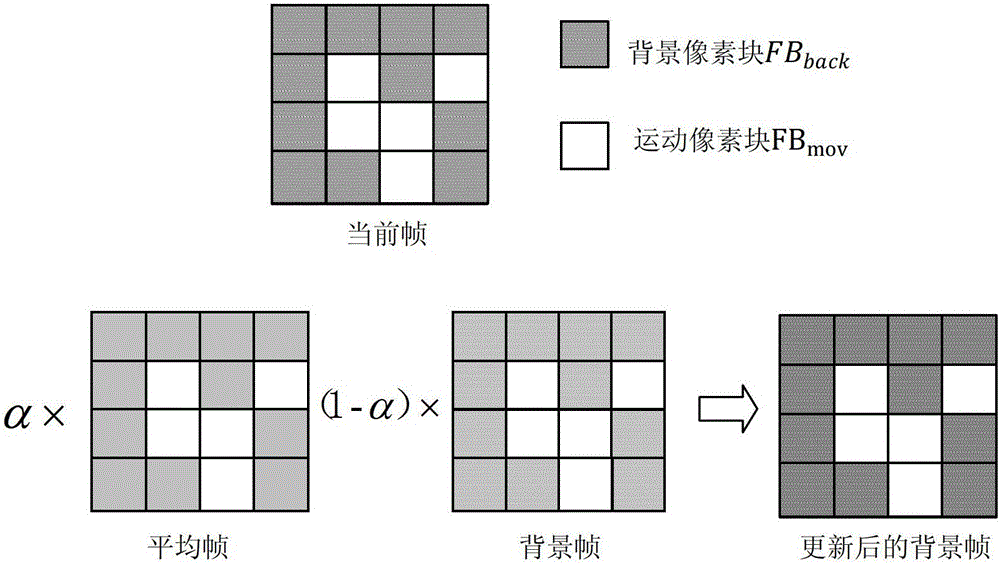An Adaptive 3D Noise Reduction Method for Low SNR Video in Fixed Scene
A low signal-to-noise ratio, self-adaptive technology, applied in the field of video noise reduction research, can solve problems such as time-consuming, "block flicker" effect, large amount of calculation, etc., to improve anti-interference ability, avoid block flicker, self-adaption strong effect
- Summary
- Abstract
- Description
- Claims
- Application Information
AI Technical Summary
Problems solved by technology
Method used
Image
Examples
Embodiment Construction
[0035] The present invention will be described in detail below with reference to the accompanying drawings and examples.
[0036] The invention provides an adaptive 3D noise reduction method for low SNR video in a fixed scene, comprising the following steps:
[0037] Step 1. Collect N frames of video sequence F for initial background estimation 1 ~F N , the kth frame F k with the next frame F k+1 The gray value of the difference is obtained to obtain N-1 difference images, so that D k Indicates the k-th inter-frame difference image, that is, D k (i,j)=|F k+1 (i,j)-F k (i,j)|, where k=1,2,...,N-1; N takes a value according to the number of moving objects in the video field of view used for initial background estimation, the more moving objects, the greater the value of N , so that the pixels at each position in the N video belong to the background area at least once, otherwise the estimated background is prone to "holes". However, the larger the value of N, the longer the...
PUM
 Login to View More
Login to View More Abstract
Description
Claims
Application Information
 Login to View More
Login to View More - R&D Engineer
- R&D Manager
- IP Professional
- Industry Leading Data Capabilities
- Powerful AI technology
- Patent DNA Extraction
Browse by: Latest US Patents, China's latest patents, Technical Efficacy Thesaurus, Application Domain, Technology Topic, Popular Technical Reports.
© 2024 PatSnap. All rights reserved.Legal|Privacy policy|Modern Slavery Act Transparency Statement|Sitemap|About US| Contact US: help@patsnap.com










